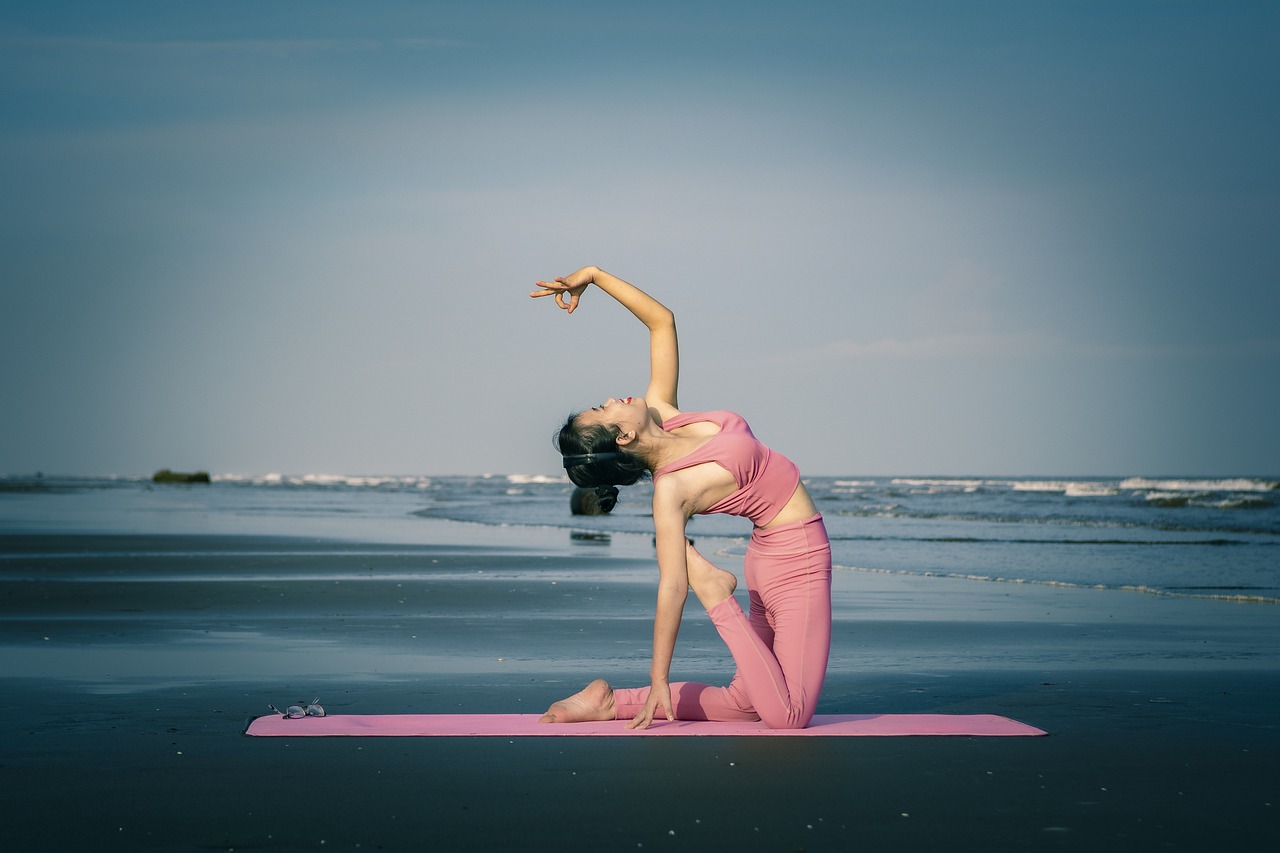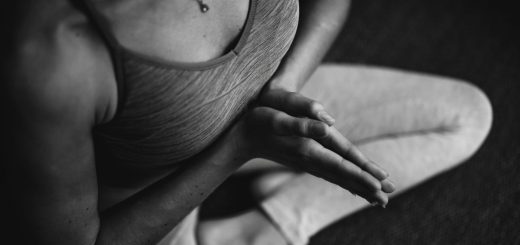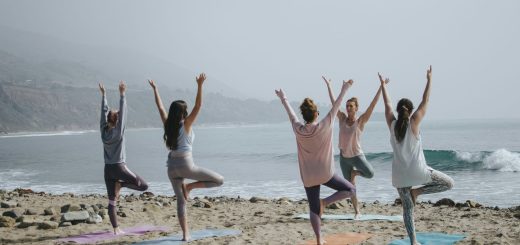Relax & Restore: Essential Restorative Poses

Before diving in, please note: This post is for informational purposes only. If you’d like to know more about how we approach topics, feel free to check out our friendly Disclaimer Page.
Hey there, amazing readers! 🖐️ Just a quick note: yes, we know there are a lot of ads here. Trust us, we get it—it’s not the prettiest look, but they help us keep this blog alive and kicking. Those pesky little ads cover the costs of all the behind-the-scenes magic, from hosting and tech stuff to creating content we hope you’ll love.
We’re committed to delivering quality posts, and your support (even just sticking around despite the ads) means everything to us. So, bear with us, and thanks for helping us keep the good vibes rolling. Now, on to the fun stuff! 😉
TRANSLATE BUTTON AT THE END OF THE ARTICLE
Introduction: The Importance of Restorative Yoga
Restorative yoga is a gentle and therapeutic practice that focuses on relaxation and rejuvenation.
In today’s fast-paced world, where stress and anxiety are common, incorporating restorative poses into your yoga routine can help promote deep relaxation and restore balance to the body and mind.
These poses are designed to support the body in a comfortable and passive way, allowing you to relax deeply and release tension.
By practicing restorative yoga, you can activate the parasympathetic nervous system, which helps counteract the effects of stress on the body.
This can lead to reduced levels of cortisol, the stress hormone, and a sense of calm and well-being.
Restorative poses also help improve circulation, promote better sleep, and enhance flexibility.
Whether you are a beginner or a seasoned yogi, incorporating restorative poses into your practice can provide numerous benefits for your physical, mental, and emotional well-being.
In this article, we will explore some essential restorative poses that can help you relax, restore, and rejuvenate.
Child’s Pose: A Gentle Back Stretch
Child’s Pose, also known as Balasana, is a calming and grounding pose that gently stretches the back, hips, thighs, and ankles.
To practice Child’s Pose, start by kneeling on the mat with your big toes touching and knees wide apart.
Sit back on your heels and then fold forward, extending your arms in front of you and resting your forehead on the mat.
Take deep breaths and relax into the pose, allowing your spine to lengthen and your hips to soften.
Benefits of Child’s Pose:
Relieves tension in the back, shoulders, and neck.
Calms the mind and reduces stress and anxiety.
Stretches the muscles of the hips and thighs.
Helps improve digestion and relieve constipation.
Child’s Pose is a gentle and soothing pose that can be practiced at any time to help you relax and release tension in the body.
Legs Up the Wall: Relieve Tension and Stress
Legs Up the Wall, or Viparita Karani, is a restorative pose that helps relieve tension in the legs, lower back, and hips.
To practice Legs Up the Wall, sit with your side against a wall and extend your legs up the wall, bringing your hips as close to the wall as comfortable.
You can place a folded blanket or bolster under your hips for support.
Relax your arms by your sides, close your eyes, and focus on your breath as you allow gravity to gently stretch your hamstrings and lower back.
Benefits of Legs Up the Wall:
Improves circulation and reduces swelling in the legs.
Relieves tension in the lower back and hips.
Calms the nervous system and reduces stress and anxiety.
Helps alleviate symptoms of insomnia and fatigue.
Legs Up the Wall is a simple yet effective restorative pose that can be practiced at the end of the day to promote relaxation and relieve tired legs.
Supported Bridge Pose: Open Your Heart
Supported Bridge Pose, or Setu Bandha Sarvangasana, is a heart-opening pose that helps release tension in the chest, shoulders, and neck.
To practice Supported Bridge Pose, lie on your back with your knees bent and feet hip-width apart.
Place a yoga block or bolster under your sacrum and gently lift your hips towards the sky.
Rest your arms by your sides or extend them overhead to deepen the stretch.
Close your eyes and focus on opening your heart and chest as you breathe deeply.
Benefits of Supported Bridge Pose:
Stretches the chest, shoulders, and neck.
Improves posture and counteracts the effects of sitting.
Opens the heart chakra and promotes feelings of love and compassion.
Relieves tension in the back and helps alleviate symptoms of anxiety and depression.
Supported Bridge Pose is a rejuvenating pose that can help you release emotional tension and open your heart to new possibilities.
Reclining Bound Angle Pose: Relax Your Hips
Reclining Bound Angle Pose, or Supta Baddha Konasana, is a restorative pose that helps relax and open the hips, groins, and inner thighs.
To practice Reclining Bound Angle Pose, lie on your back with your knees bent and feet together, allowing your knees to fall open to the sides.
You can place yoga blocks or bolsters under your knees for support.
Relax your arms by your sides and close your eyes as you breathe deeply and surrender into the pose.
Benefits of Reclining Bound Angle Pose:
Opens the hips, groins, and inner thighs.
Relieves tension in the lower back and pelvis.
Calms the nervous system and promotes relaxation.
Helps improve circulation and digestion.
Reclining Bound Angle Pose is a soothing pose that can help you release tension in the hips and pelvis, promoting a sense of ease and relaxation in the body.
Supported Shoulderstand: Calm Your Mind
Supported Shoulderstand, or Salamba Sarvangasana, is an inversion pose that helps calm the mind and reduce stress and anxiety.
To practice Supported Shoulderstand, lie on your back and lift your legs towards the sky, supporting your lower back with your hands.
You can place a folded blanket under your shoulders for support.
Keep your neck in line with your spine and breathe deeply as you relax into the pose, allowing the benefits of inversion to calm your mind and nervous system.
Benefits of Supported Shoulderstand:
Reduces stress and anxiety by calming the mind.
Improves circulation and lymphatic drainage.
Stimulates the thyroid gland and helps regulate metabolism.
Relieves tension in the neck and shoulders.
Supported Shoulderstand is a powerful pose that can help you find peace and tranquility in both body and mind, making it an essential restorative pose for mental well-being.
Corpse Pose: Complete Relaxation
Corpse Pose, or Savasana, is a classic relaxation pose that allows you to completely surrender and let go.
To practice Corpse Pose, lie on your back with your arms by your sides, palms facing up, and legs extended.
Close your eyes and take deep breaths as you relax every part of your body, from head to toe.
Focus on releasing tension and quieting the mind as you allow yourself to rest deeply in stillness.
Benefits of Corpse Pose:
Promotes deep relaxation and stress relief.
Helps reduce anxiety and improve sleep quality.
Allows the body to integrate the benefits of the practice.
Cultivates mindfulness and awareness.
Corpse Pose is a vital part of any yoga practice, serving as a time for complete relaxation and integration of the benefits of the practice, leaving you feeling rejuvenated and at peace.
Supported Fish Pose: Soothe Your Nervous System
Supported Fish Pose, or Matsyasana, is a restorative pose that helps open the chest, throat, and heart, while soothing the nervous system.
To practice Supported Fish Pose, place a yoga block or bolster horizontally under your upper back and lie back on it, allowing your chest to open and your head to fall back.
You can extend your legs or keep them bent for more support.
Close your eyes and breathe deeply as you relax into the pose, feeling a sense of expansion and calmness.
Benefits of Supported Fish Pose:
Opens the chest, throat, and heart chakra.
Soothes the nervous system and calms the mind.
Improves posture and counteracts the effects of slouching.
Helps relieve symptoms of fatigue and anxiety.
Supported Fish Pose is a nurturing pose that can help you find peace and ease in both body and mind, making it a valuable addition to your restorative yoga practice.
Legs on Chair Pose: Ease Lower Back Pain
Legs on Chair Pose, or Viparita Karani with a chair, is a restorative pose that helps ease tension in the lower back and legs.
To practice Legs on Chair Pose, sit on the floor with your back against a chair and extend your legs up the seat of the chair.
You can place a folded blanket under your hips for support.
Relax your arms by your sides and close your eyes as you breathe deeply and allow gravity to gently stretch your lower back and hamstrings.
Benefits of Legs on Chair Pose:
Relieves tension in the lower back and legs.
Improves circulation and reduces swelling in the feet and ankles.
Calms the nervous system and promotes relaxation.
Helps alleviate symptoms of sciatica and varicose veins.
Legs on Chair Pose is a gentle and effective pose that can help you release tension and discomfort in the lower back and legs, promoting a sense of ease and well-being.
Seated Forward Fold: Release Tension in Your Spine
Seated Forward Fold, or Paschimottanasana, is a restorative pose that helps release tension in the spine, shoulders, and hamstrings.
To practice Seated Forward Fold, sit on the floor with your legs extended in front of you.
Hinge at the hips and fold forward, reaching for your feet or ankles.
You can use a yoga strap or towel to help you reach if needed.
Relax your head and neck, close your eyes, and breathe deeply as you surrender into the pose, allowing the spine to lengthen and release tension.
Benefits of Seated Forward Fold:
Stretches the spine, shoulders, and hamstrings.
Relieves tension in the back and helps improve posture.
Calms the mind and reduces stress and anxiety.
Stimulates the digestive organs and improves digestion.
Seated Forward Fold is a soothing pose that can help you release tension in the spine and promote relaxation and well-being in both body and mind.
Yoga Nidra: Deep Relaxation and Meditation
Yoga Nidra, or yogic sleep, is a guided relaxation and meditation practice that promotes deep relaxation and healing.
During Yoga Nidra, you lie down in Corpse Pose and follow a guided meditation that takes you through various stages of relaxation, from body awareness to visualization and breath awareness.
This practice helps you release tension, reduce stress, and cultivate a sense of inner peace and well-being.
Benefits of Yoga Nidra:
Promotes deep relaxation and stress relief.
Reduces anxiety and improves sleep quality.
Enhances self-awareness and mindfulness.
Supports emotional healing and spiritual growth.
Yoga Nidra is a powerful practice that can help you access deep states of relaxation and meditation, making it a valuable tool for restoring balance and harmony to the body and mind.
Conclusion: Incorporating Restorative Poses Into Your Routine
Incorporating restorative poses into your yoga practice can have profound benefits for your physical, mental, and emotional well-being.
By taking the time to relax and restore, you can counteract the effects of stress, promote relaxation, and rejuvenate your body and mind.
Whether you are looking to release tension in your body, calm your mind, or improve your overall well-being, these essential restorative poses can help you find peace and balance in your life.
Make time for restorative yoga in your routine and experience the transformative power of deep relaxation and restoration.

The Enlightenment Journey is a remarkable collection of writings authored by a distinguished group of experts in the fields of spirituality, new age, and esoteric knowledge.
This anthology features a diverse assembly of well-experienced authors who bring their profound insights and credible perspectives to the forefront.
Each contributor possesses a wealth of knowledge and wisdom, making them authorities in their respective domains.
Together, they offer readers a transformative journey into the realms of spiritual growth, self-discovery, and esoteric enlightenment.
The Enlightenment Journey is a testament to the collective expertise of these luminaries, providing readers with a rich tapestry of ideas and information to illuminate their spiritual path.
Our Diverse Expertise 🌟
While our primary focus is on spirituality and esotericism, we are equally passionate about exploring a wide range of other topics and niches 🌍📚. Our experienced team is dedicated to delivering high-quality, informative content across various subjects ✨.
To ensure we provide the most accurate and valuable insights, we collaborate with trusted experts in their respective domains 🧑🏫👩🏫. This allows us to offer well-rounded perspectives and knowledge to our readers.
Our blog originally focused on spirituality and metaphysics, but we’ve since expanded to cover a wide range of niches. Don’t worry—we continue to publish a lot of articles on spirituality! Frequently visit our blog to explore our diverse content and stay tuned for more insightful reads.





